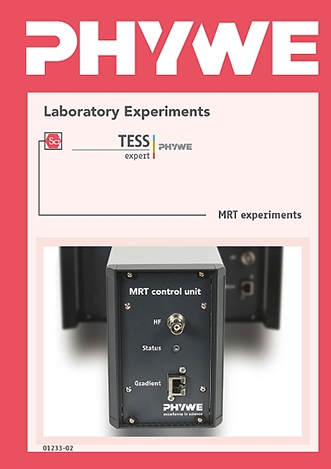Benefits
Comprehensive collection of experiments ragarding the magnetic resonance (MR) technology. The manual comprises basic experiments of the MR physics as well as experiments on complex MR imaging (2D and 3D). Experiments are didactically and precisely prepared and convey all relevant information about magnetic resonance tomography. Through questions, answers, evaluations and a comprehensive theory students are guided and are able to learn one of the most important procedures of medical diagnostics with a lot of fun and enjoyment. The software needed to perform the experiments perfectly fits the experimental literature and thus enables an unique learning and teaching experience. For example parameters can be directly varied during a measurement ("on runtime").
The manual is suitable for almost all fields of science. However, basically it is aimed at students with a deep medical background.
Learning objectives
The manual consist of five TESS expert experimental units (P5942100-P5942500). Each unit consists of a multiude of single experiments an covers a very specific topic of MR physics and MR diagnostics.
- Basic principles in nuclear magentic resonance (NMR)
- Relaxation times in nuclear magnetic resonance
- Spatial encoding in nuclear magnetic resonance
- Magnetic resonance imaging I (Spin Echo 2D, Flash 2D)
- Magnetic resonance imaging II (Localized Spin Echo 2D and 3D)
Equipment and Technical Data
- Experimental descriptions with a clear division in related topics, principle, equipment, set-up, questions, tasks, illustrated implementation related to the tasks, theory with many coloured figures and all necessary contents to process the questions and tasks, evaluation with exemplatory results, and important notes for operation and safety. This simplifies orientation and evaluation and helps finding a suitable series of experiments in order to create individual instructions for practica. Because of the depth of information no further literature is required.
- All experiments rely on computer-based measurements and require the provided software "measure MRT". The software is clearly arranged and easy to use. It is possible to analyze the results as well as to export data an images in common data formats (DICOM, JPEG, CSV, TXT). Furthermore there is the possibility to create courses on your own and thus put the MR-experiments in an individual education environment that best fits to what is actually needed.
Manual, DIN A4, approx. 120 pages
